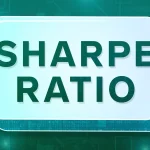
Quantitative Investing and Algorithmic Trading are terms used to describe the use of algorithms to place trades in the stock market. These strategies can be profitable, but also carry significant risk.
Before writing an algorithm, a trader should first understand how the market works and what factors can affect it. They should then experiment with various variables such as how much of a risk factor they are willing to accept, how much leverage they are willing to take and which stocks they want to short or long.
Risk management
Quantitative risk management involves identifying, measuring, and mitigating risks in portfolios. Fund managers typically employ a number of quantitative tools and models when doing this.
A risk model is a mathematical simulation that determines the impact of different assumptions or random variables on a portfolio’s returns. Risk managers then analyze the results of these simulations and decide on the best course of action to mitigate or deal with risk.
Risk management strategies include implementing prevention and avoidance, risk transfer (insurance), or risk shifting (derivatives). The decision to use a particular method depends on the overall risk profile of a portfolio and the benefits versus costs.
Trading frequency
Quantitative Investing and Algorithmic Trading refers to the use of computer algorithms to make decisions and execute trades in fractions of seconds. It enables traders to take advantage of tiny price discrepancies that occur over the most limited time horizons and that have no other way of being exploited.
The speed at which the trading takes place is a key factor in how profitable it can be. Traders use computer algorithms to scan thousands of stock exchanges and markets at once, looking for small changes in prices.
Using these tools, financial institutions can earn large bid-ask spread returns on the slightest price changes. They can also find expanded opportunities by arbitraging across multiple markets and stock exchanges.
However, some critics have argued that this type of trading erodes market liquidity and can cause volatility and market crashes. In addition, it can give an unfair advantage to large investors. Despite these issues, many professional investors continue to embrace these types of strategies.
Trading platform
Quantitative Investing and Algorithmic Trading are trading styles that rely on computer programs to identify and execute trades. This type of trading is most commonly used by financial institutions, but can also be done by private traders.
Traders who use algorithmic trading software have the ability to backtest their strategies, which helps to eliminate risk and increase profitability. They can also customize their strategies to meet their unique goals and trading style.
Algorithmic trading involves scanning the markets at lightning speed and identifying profitable opportunities. These are then automatically executed by the system, without the need for human intervention or emotions like greed and fear, resulting in consistent profits over time.
In the world of algorithmic trading, there is a vast range of software that allows traders to automate their trading process. This can include portfolio optimization, risk management, backtesting and pattern recognition models.
Programming skills
If you’re interested in becoming a quant developer, you need to have good programming skills. You’ll use these skills when you develop and test your trading algorithms.
Quants must have a thorough understanding of applied mathematics, statistical models, advanced finance concepts, data structures, algorithms and scientific computing. They also need to have strong programming knowledge in a computer language like Python or C++.
A quant developer also needs to have a good knowledge of tools and platforms used in this industry, such as Bloomberg and Reuters. These platforms aggregate market data from different exchanges and provide it in a format that can be processed by algorithmic trading software.









